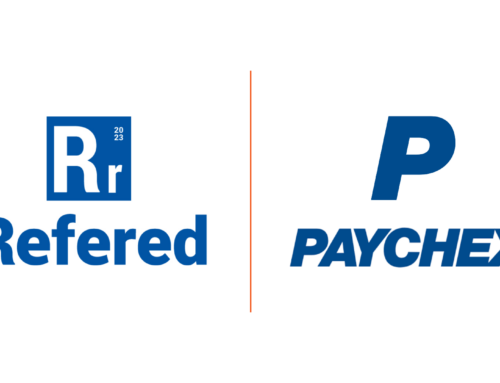Why Employee Referrals Are Your Secret Weapon in 2024
In today’s competitive job market, finding the right talent can feel like searching for a needle in a haystack. But what if your best hires were just a referral away? At Refered.com, we know that employee referral programs are the golden ticket to connecting companies with top-tier candidates. Let’s dive into the stats and stories that make employee referrals a game-changer for recruitment.
What are Employee Referrals?
Employee referral programs are a recruitment strategy where companies encourage their current employees to recommend candidates for open positions. By tapping into the social circles of your workforce, you access a pre-vetted pool of candidates, significantly increasing the chances of finding the right match quickly and efficiently. The idea is simple: who better to identify great potential hires than your current employees who understand the company culture and job requirements?
Tapping into the network of your employees means leveraging their personal and professional connections. Employees often know talented individuals from previous jobs, industry events, or personal relationships. These connections can be a goldmine for finding candidates who not only have the right skills but also fit well with the company culture. This method relies on the idea that your employees have a keen sense of what it takes to succeed in your company, and they can identify people who meet those standards. By encouraging employees to refer candidates, you create a bridge between the company and a vast, untapped network of potential talent. In addition, these programs often use referral software to streamline the process, making it easy for employees to submit referrals and for recruiters to track them.
What is an Employee Referral Program?
An employee referral platform is a specialized software tool designed to streamline and enhance the process of employee referrals within a company. These platforms provide a centralized system where employees can easily submit referrals for open positions and receive updates on any incentives or rewards they may be eligible for. The platform typically integrates with the company’s existing HR and recruitment systems, ensuring a seamless flow of information and efficient management of the referral process.
Employee referral platforms are equipped with features that make the referral process intuitive and user-friendly. They often include referral tracking, automated communications, and analytics to monitor the effectiveness of the referral program. Some platforms also offer gamification elements, such as leaderboards and point systems, to encourage participation and keep employees engaged. By leveraging an employee referral platform, companies can optimize their referral programs, making it easier for employees to refer qualified candidates and for recruiters to manage and evaluate those referrals. This results in a more efficient, effective, and rewarding referral process for everyone involved.
How Effective Are Employee Referrals?
Employee referral programs are not just a fad; they’re a powerhouse of efficiency and effectiveness. These programs are incredibly impactful due to their ability to efficiently connect companies with high-quality candidates. According to a survey by Jobvite, referred candidates are hired at a rate of about 30%, significantly higher than the 7% hiring rate for candidates sourced through other methods. This efficiency is further highlighted by the fact that 1 out of 8 referred candidates gets hired, showcasing the predictability and reliability of these programs.
Furthermore, referred employees tend to stay longer and be more satisfied with their jobs. Referred hires tend to stay around longer – they are 40% more likely to be retained after one year and 18% more likely to be satisfied with their jobs. This longevity and satisfaction lead to reduced turnover rates, with referred employees staying 35% longer than those hired through other methods.
The cost-effectiveness of employee referrals is another significant advantage. Companies can save over $7,500 per hire by using referral programs, as the cost per hire for employee referrals is typically lower than other recruiting methods. This financial benefit, combined with the higher quality of hire and faster recruitment process, makes employee referral programs a vital tool for any organization’s hiring strategy. With 84% of companies utilizing these programs, the widespread adoption underscores their effectiveness and value in the recruitment process.
Why are Employee Referrals so Effective?
Slashing Hiring Costs
Employee referral programs make hiring easier by leveraging the extensive networks of current employees. This approach helps companies bypass many traditional hiring costs and time-consuming processes. For instance, the typical cost to hire, including job board fees (ranging from $100 to $500 per job per month), recruiter fees (15-30% of an employee’s first-year salary), and internal HR expenses, can add up quickly.
Employee referrals reduce these costs by providing a pool of pre-vetted candidates, thus cutting down on job board and recruiter fees. Additionally, referred candidates tend to fit better with company culture, which reduces turnover rates and the associated costs. It takes an average of three to eight months for a new hire to become fully productive, and losing an employee within a year can cost a company around $15,000. Referrals are more likely to stay longer, thereby saving companies these substantial turnover costs.
Moreover, vacancies can cost a company about $98 per day, and the time to fill a position via traditional methods averages between 36 and 42 days. Employee referrals typically shorten this period, further minimizing vacancy costs. The quicker integration of referred employees into the company culture also reduces the average training cost of $1,105 per employee per year. By tapping into the networks of existing employees, companies can streamline their hiring processes, save on various recruitment expenses, and enhance overall productivity.
Speed to Hire: Faster Than a Speeding Bullet
Time is money, especially in recruitment. Employee referrals significantly expedite the hiring process, making them an invaluable tool for recruiters. On average, positions filled through referrals take just 29 days to fill, compared to 39 days via job boards and a substantial 55 days through career sites. This speed is due to the pre-screening effect, where employees recommend candidates who are a good fit for the role, thus reducing the time spent on initial vetting and interviews. Additionally, referred candidates are often more prepared and informed about the company, further accelerating the interview process. With the capability to reduce hire times by up to 40%, employee referrals help companies quickly secure top talent, minimizing downtime and maintaining productivity.
Quality of Hire: The Cream of the Crop
When it comes to the quality of hire, referrals are the crème de la crème. Studies show that after two years, 45% of referred employees are still with the company, compared to just 20% of those hired through other means. This isn’t just about sticking around; referred hires often outperform their peers. According to SHRM, referred employees produce 25% more profit for their companies. Additionally, referred candidates tend to have a more accurate understanding of the job expectations and company environment, as they receive insider insights from their referrers. This often leads to higher engagement and productivity. At the end of the day, employee referrals help companies quickly secure top talent, minimizing downtime and maintaining productivity.
Total Cost-Effectiveness: Bang for Your Buck
Who doesn’t love saving money? Employee referrals are not only efficient but also highly cost-effective. The average cost per hire through traditional recruitment methods can exceed $4,000, while referrals can slash this by up to 50%. This reduction in cost is due to the lower expenses in advertising, recruitment agency fees, and the faster hiring process. Additionally, referred employees have higher retention rates, which means less money spent on turnover and training new hires. And as previously mentioned, referred employees produce 25% more profit for their companies, underscoring the financial benefits of a robust referral program. This combination of lower hiring costs and higher productivity makes employee referrals a highly economical choice for businesses.
Bottom Line: The Advantages and Disadvantages of Employee Referrals
Employee referral programs come with a range of advantages and some disadvantages that companies should consider. On the positive side, they significantly speed up the hiring process and cut costs, leading to faster, more efficient recruitment. Referred candidates are not only quicker to hire but also tend to stay longer and perform better, enhancing overall job satisfaction and productivity. These programs can also boost employee morale and engagement by recognizing their contributions. However, potential downsides include risks of bias, limited diversity, internal politics, and the possibility of attrition if the referring employee leaves. Let’s dive deeper into these pros and cons.
Advantages:
- Speed of Hiring: Employee referrals can significantly speed up the hiring process. According to a study by CareerBuilder, referred candidates are hired 55% faster than those sourced through career sites.
- Cost Savings: Referrals can reduce hiring costs by up to 50%, making them a cost-effective recruitment strategy.
- High Retention Rates: Referred employees are 25% more likely to stay with the company for over two years compared to non-referred hires, reducing turnover and associated costs.
- Improved Quality of Hire: Referred candidates often have better job performance and are a better fit for the company culture, leading to increased productivity and job satisfaction.
- Employee Engagement: Referral programs can boost employee morale and engagement, as employees feel valued and appreciated for their contributions to the hiring process.
Disadvantages:
- Potential for Bias: There is a risk of bias in referrals, as employees may recommend friends or acquaintances without considering their qualifications or fit for the role.
- Limited Diversity: Over-reliance on employee referrals can lead to a lack of diversity in the workforce, as employees may refer individuals from similar backgrounds.
- Internal Politics: Employee referrals can sometimes lead to internal politics and favoritism, affecting team dynamics and morale.
- Risk of Attrition: If a referring employee leaves the company, there is a risk that their referral may also leave, particularly if they had a close relationship with the referrer.
Conclusion
The statistics speak for themselves: employee referral programs are an invaluable strategy for attracting, hiring, and retaining top talent. At Refered, we’re at the forefront of this revolution, providing a platform that embodies the efficiency, cost-effectiveness, and quality of hire that referrals can bring to an organization. As the job market continues to evolve, the importance of leveraging personal networks and technology to enhance recruitment strategies cannot be overstated. The future of hiring is here, and it’s powered by referrals.
TL;DR
Employee referral programs are your secret weapon for hiring top talent efficiently and cost-effectively. Boost employee engagement, reduce recruitment time, and increase retention rates with Refered’s cutting-edge referral platform. Start transforming your hiring process today!







